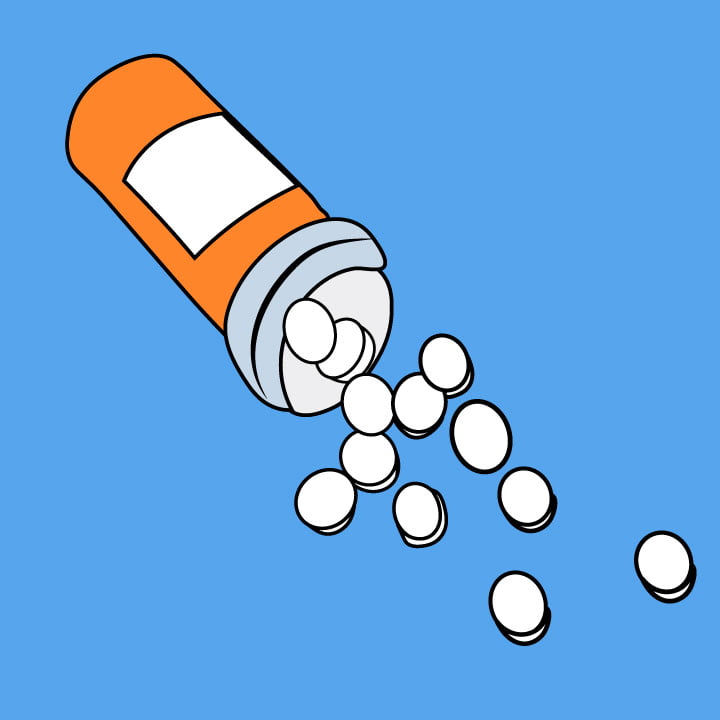By: Elle Grant
The opioid epidemic is one of the great public health crises facing the United States today. Over the past two decades, the crisis has ebbed and flowed in different moments, but overall deaths, especially amongst younger people, have increased at an alarming rate. One of the most distinct drugs at the root of the problem is OxyContin from the company Purdue Pharma, a substance now known to be distinctly addictive and dangerous.
OxyContin, also known on the street as killers, OC, Oxy, poor man’s heroin or Oxycotton, is dangerous particularly due to its most active ingredient; “a 12-hour, time-released form of oxycodone, a synthetic form of morphine that is found in common painkillers like Percodan and Percocet.” Alarmingly, OxyContin can have as much as ten times the amount of oxycodone as an average Percodan or Percocet. Approved by the FDA in 1995, the National Institute on Drug Abuse asserts the “chronic use of drugs such as OxyContin can lead to physical dependence and severe withdrawal symptoms if use is stopped, including insomnia, diarrhea, vomiting, cold flashes with goose bumps, and involuntary leg movements. Large doses can cause severe, potentially fatal, respiratory depression.” Intended to be taken orally, many patients and addicts chose to inject or snort the pills (after being modified) to quicken and heighten the effects. Oxycodone is intensely addictive, requiring more frequent and stronger doses as the body becomes dependent.
Efforts were being made to hold OxyContin owners and Purdue Pharma executives accountable for their actions. Thousands of lawsuits had been filed against the Sackler family, one of America’s wealthiest with an estimated combined net worth of about $13 billion. One of the main pillars of the family was Jonathan Sackler, son of one of the three Sackler brothers that transformed the small drug company Purdue Frederick into a hugely profitable pharmaceutical firm. Sackler passed away on the June 30 due to cancer, complicating many of the lawsuits as he was often named a defendant. Other members of his family have been named other defendants, depending on the case.
The famed OxyContin pill launched in the mid-1990s and was continually and thoroughly promoted by the Connecticut based family. The members of the family are charged with the accusation that “eight people in a single family made the choices that caused much of the US opioid epidemic” due to an unethical, irresponsible, and often illegal scheme. Furthermore, “the actions of the Sackler family and Purdue Pharma included sharing studies that they knew were misleading, claiming that this was an effective, long-term treatment that didn’t give rise to risks of addiction,” Colorado Attorney General Phil Weiser told reporters at a news conference last year. “Those claims were verifiably false and ignored expert warnings. And they even undermined studies suggesting that there were addictive effects.”
Purdue as a company as well as the Sackler family deny any wrongdoing. Currently, Purdue seeks bankruptcy protection in order to counteract nearly 3,000 lawsuits that attribute blame to Purdue for beginning the opioid crisis. A Department of Justice criminal investigation is ongoing, relating to this process.
The opioid crisis, an epidemic that has spanned from 1999 to the present, has killed almost 500,000 individuals, potentially more. This count includes those that have died from an overdose involving an opioid, including both prescription and illicit opioids. Said epidemic can be characterized in three waves. The first beginning with the rise of prescribed opioids in the 1990s, including “natural and semi-synthetic opioids and methadone.” The second wave is marked by an increase of overdose deaths specifically related to heroin. The third commenced in 2013, with alarmingly stark increases in overdose deaths due to synthetic opioids, especially those “involving illicitly manufactured fentanyl” Unfortunately, “the market for illicitly manufactured fentanyl continues to change and it can be found in combination with heroin, counterfeit pills, and cocaine.”
Many Americans are unaware of the impact of the opioid crisis, or the fact that it is becoming increasingly, not decreasingly relevant to society. Yet, there are signs of positive change. Overall opioid-involved death rates decreased by 2% from 2017 to 2018, with sharper drops in prescription and heroin-involved deaths. Yet the increase in synthetic opioid-involved death rates increased by 10%, proving more work must be done to protect Americans. Currently, the Center for Disease Control combats this epidemic by monitoring trends, advancing research, equipping states with resources, supporting providers, partnering with public safety officials, and increasing public awareness.
Apart from crooked doctors, big pharmaceuticals, especially Jonathan Sackler, the Sackler family, and Purdue Pharma have received a majority of the blame for the epidemic. Jonathan Sackler’s death marks the death of who many see as a villain, but before justice was served in the American court system.
The opioid crisis, two decades in, has captivated the American imagination through film and media, as many crises often due. Netflix in particular has made efforts to document the crisis, including with the true crime series The Pharmacist and the limited series The Business of Drugs. Coming to Netflix next month is the long-awaited Hillbilly Elegy, starring Glenn Close and Amy Adams, both nominated for six Academy Awards each. The film lends a careful eye towards Appalachia, an area ravaged by the opioid epidemic, and features Adams in the role of a struggling addict. The film has already generated major Oscar buzz and will certainly bring further attention to a crucial issue.
Addiction is an incredibly difficult disease to combat. If you or a love one is struggling, please consider contacting the national hotline.






